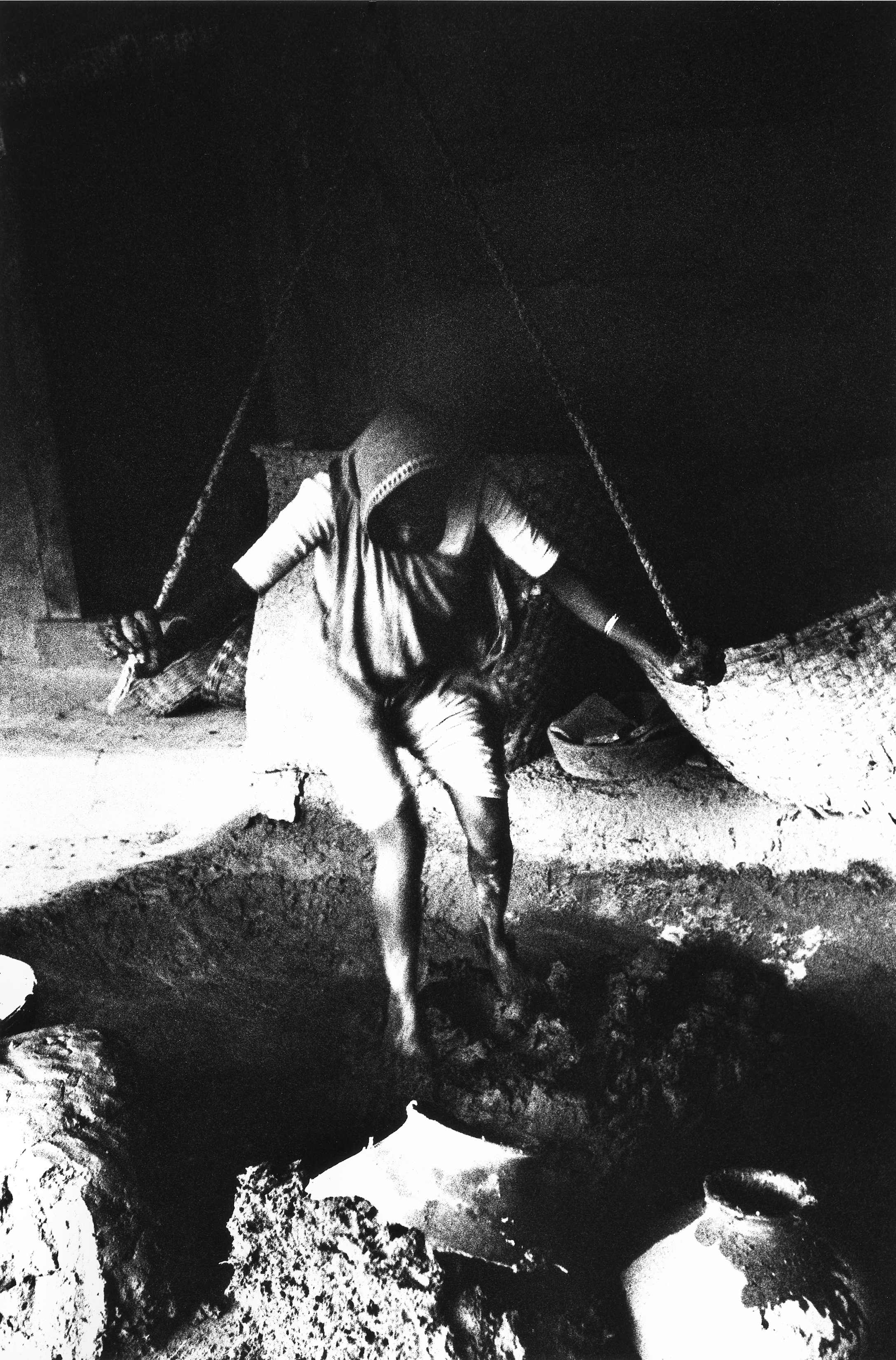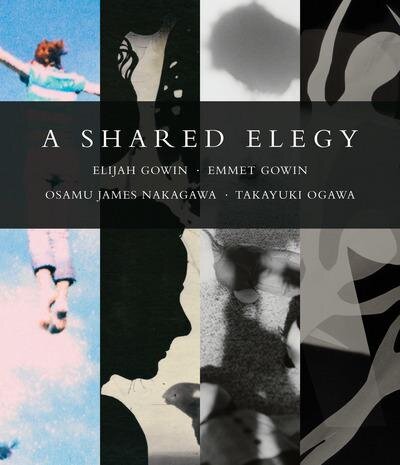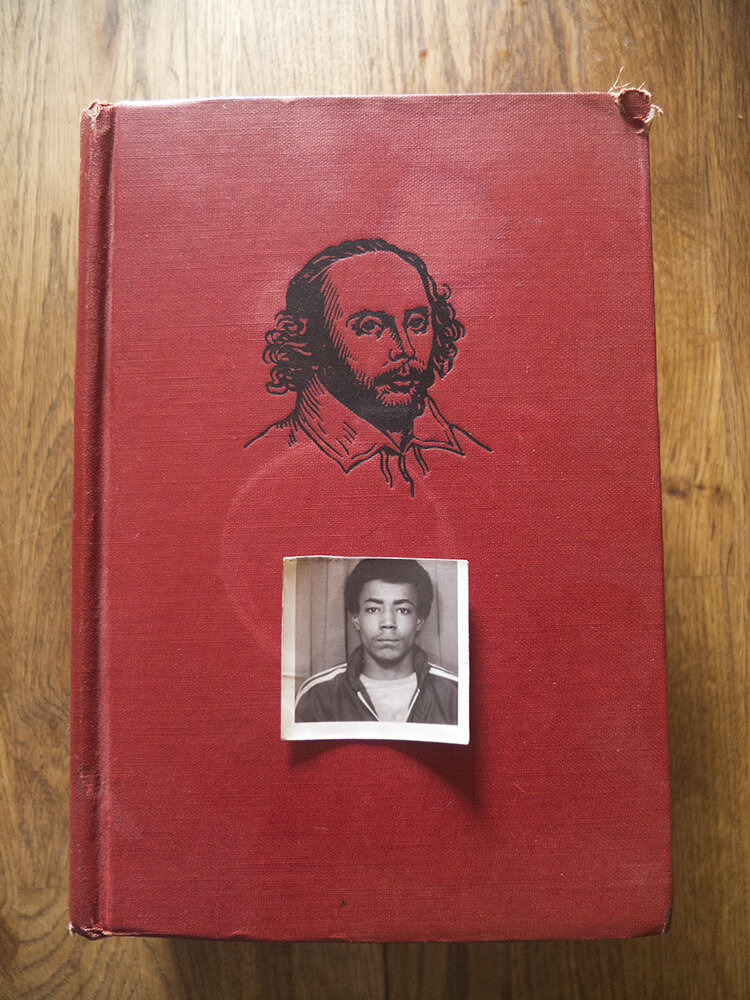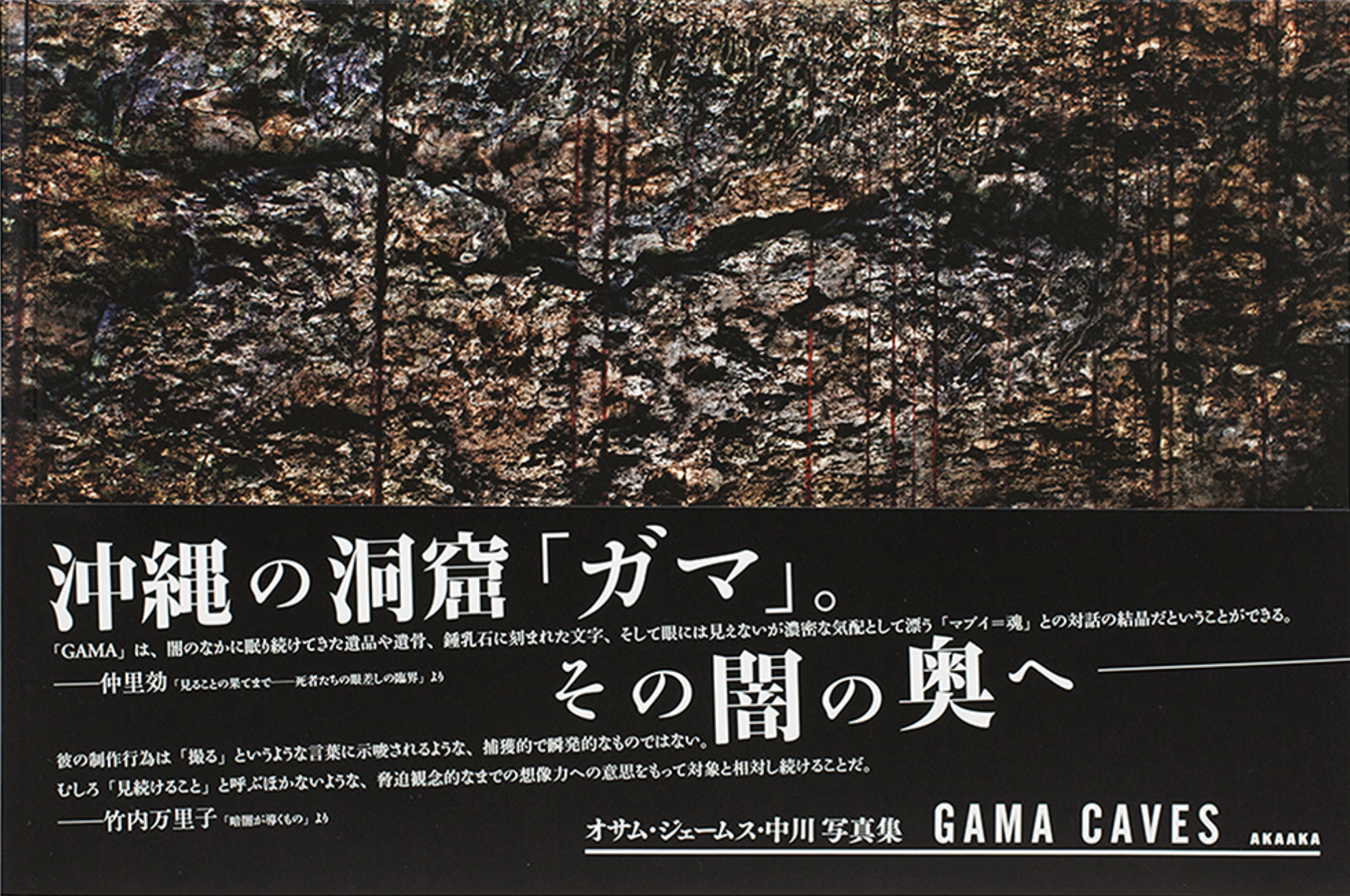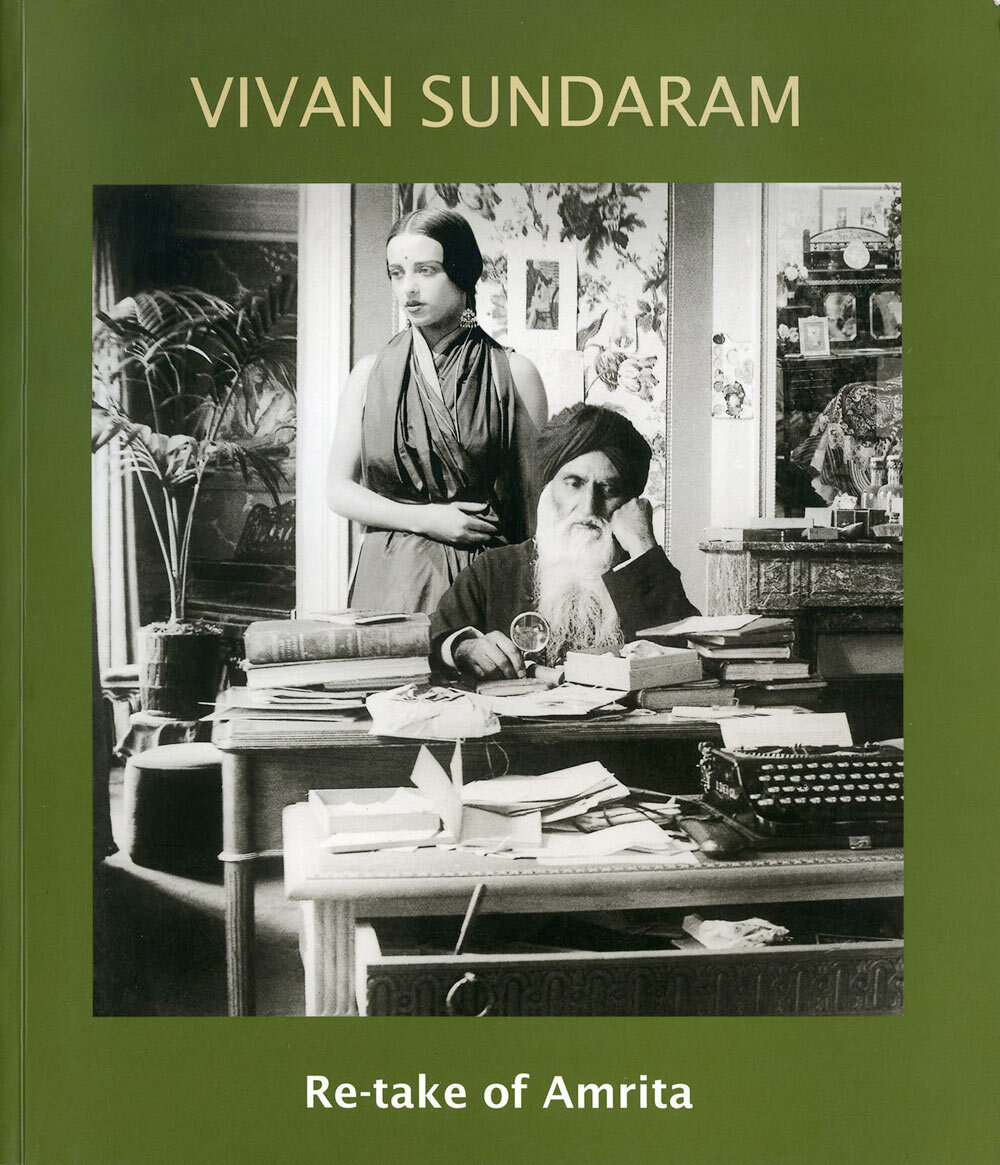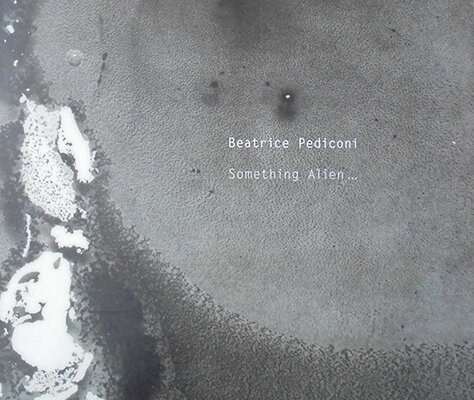
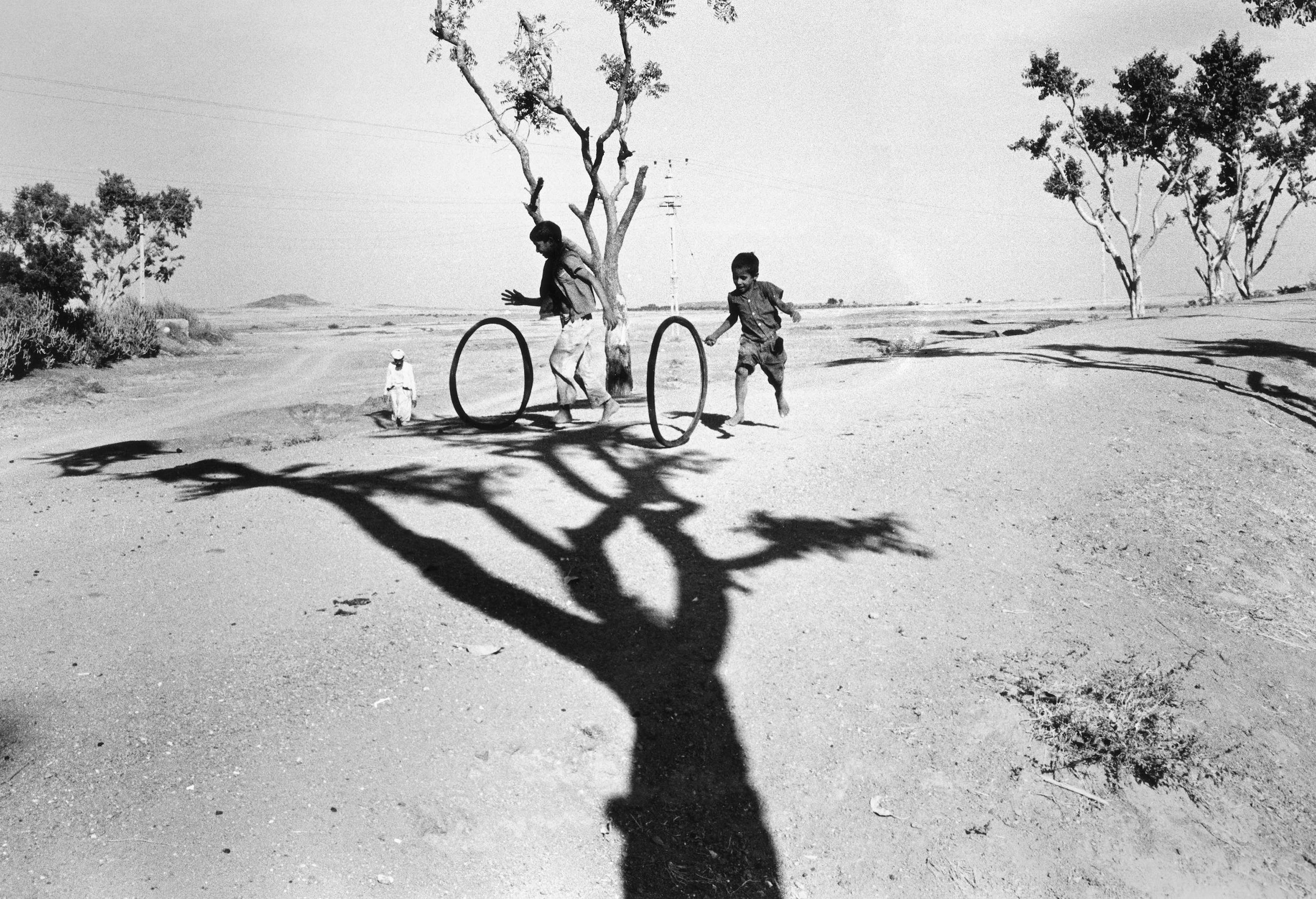
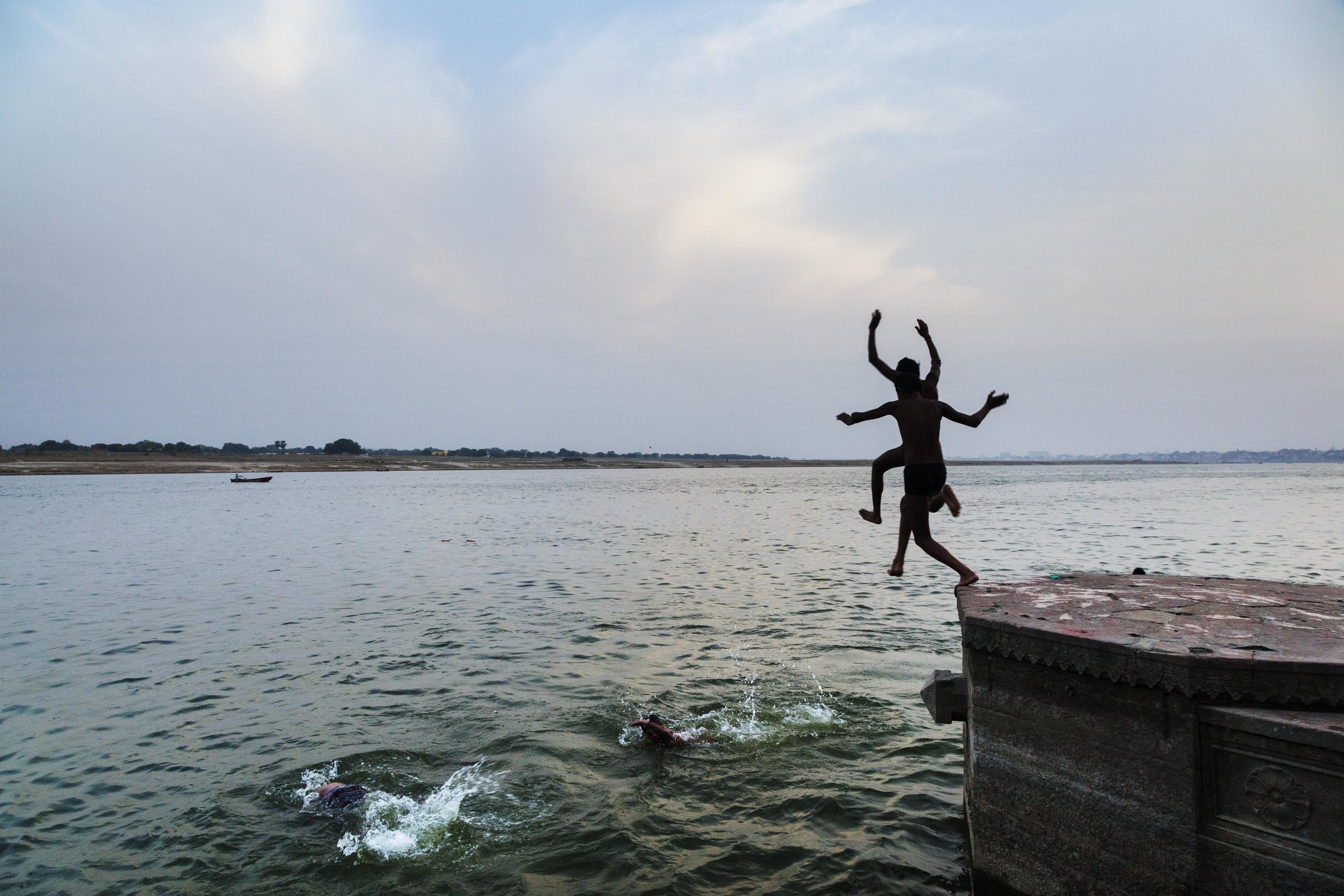


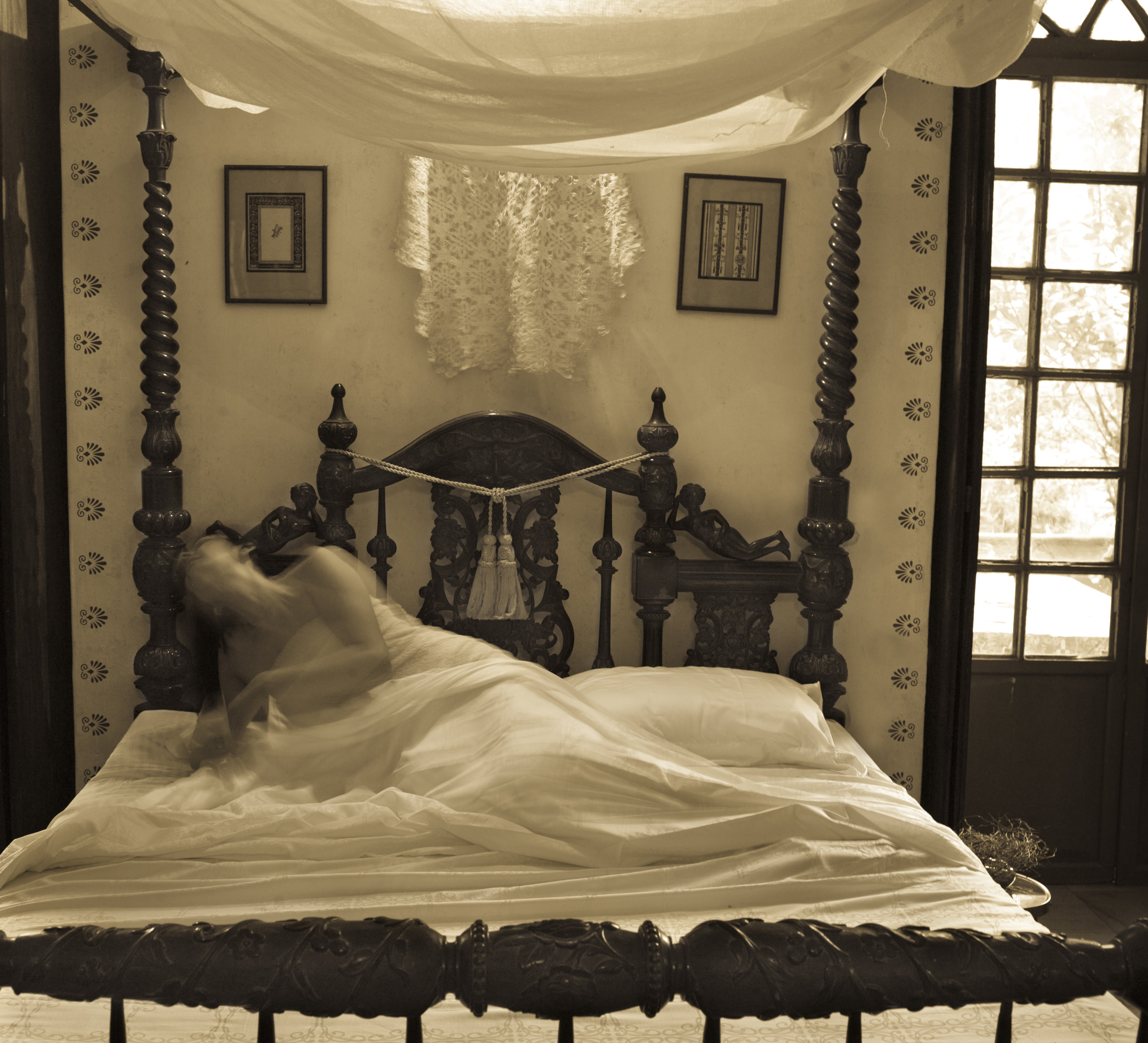
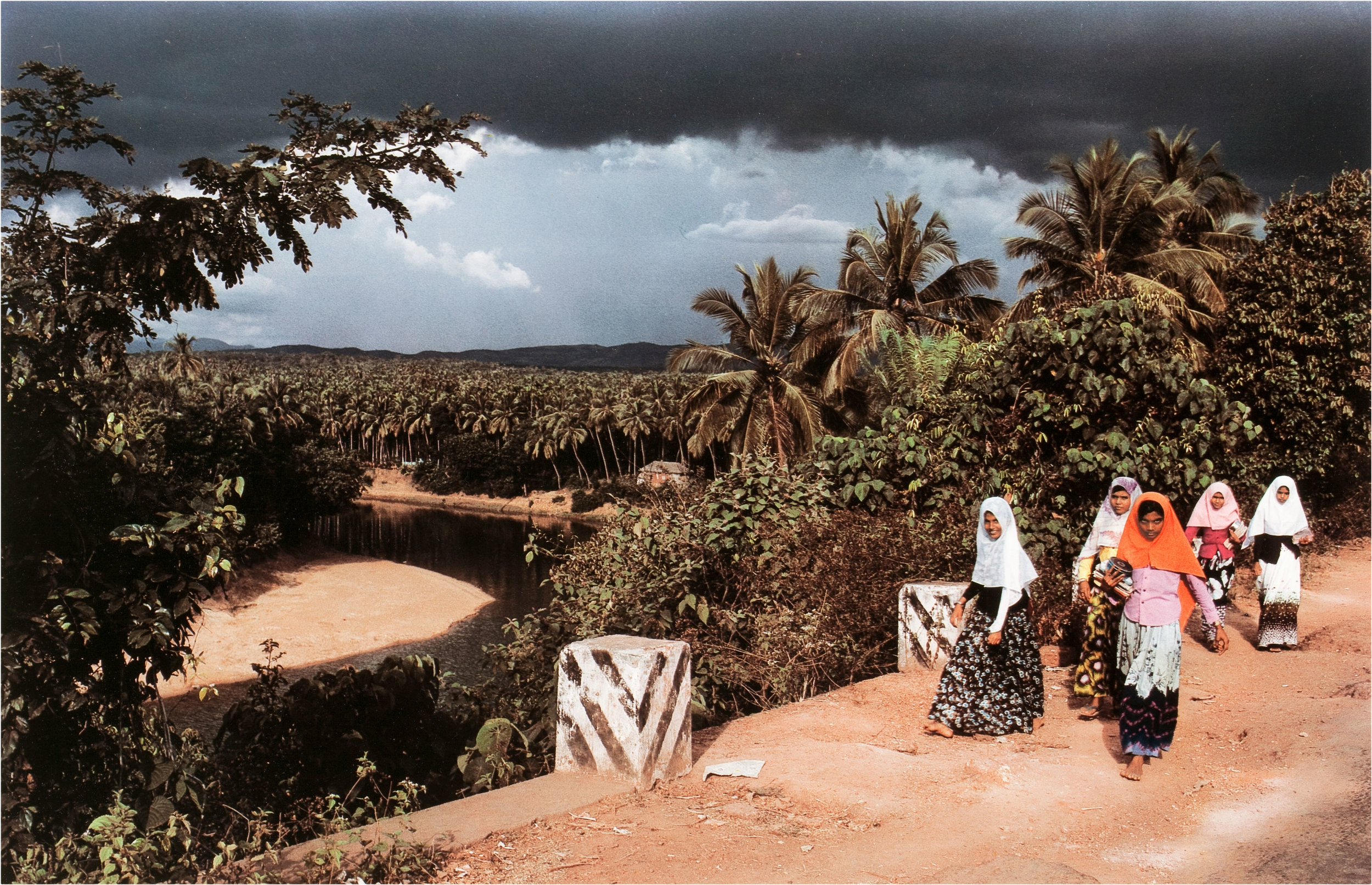
BOUNCE
October 20 – December 2, 2017
sepiaEYE is pleased to present Bounce (October 20 – December 2, 2017), a group exhibition featuring the work of eleven artists whose photographic images convey the feeling of inbetweenness, buoyancy, and elation.
The photographs and video works in this exhibition display the ups and downs of life, freezing the frame somewhere between the beginning and end of an action, from the precise click of the shutter. The ideas to be explored in this exhibition evoke the feeling of rebound not only within a visual device but also as an internal measure of spirit and emotion.
The exhibition includes photographs, lightboxes, and video work by Alex Webb, Atul Bhalla, Beatrice Pediconi, Bhupendra Karia, Nandita Raman, Osamu James Nakagawa, Pamela Singh, Qiana Mestrich, Raghubir Singh, Rebecca Norris Webb, and Vivan Sundaram.
Atul Bhalla has explored the physical, historical, spiritual, and political significance of water to the urban environment and population of his city (New Delhi) through artworks that incorporate sculpture, painting, installation, video, photography, and performance. Bhalla’s Leap from the Panchaganga draws a connection between India’s bodies of water and the spiritual. Far from being a mere bath, plunging into India’s waters can have meaningful spiritual connotations. Hindu teachings say that anyone who dips in the waters of the Yamuna’s sacred waters will not fear death. The image captures two boys jumping into the river legs and arms splayed, giving the viewer a blurred vision of what is going on. Is this a Kali sculpture being thrown into the river for a ritual? Or is this an image of two kids playing? The image touches on our sense of play, memories of jumping into the water, and childhood fearlessness. It also references the spiritual nature of water in Hindu teachings.
Bhupendra Karia’s thoughtful and luminous photographs reflect a distinct approach separate from the popular photographic trend of street photography in India during the 1960s and ‘70s. Karia claimed to have covered over 80,000 miles of India’s rural landscape. His motivation for these trips was to explore and record rural India and its native creative traditions — textiles, pottery, architectural decoration. As he spent more time in the villages and countryside, Karia began to broaden the context of his work, weaving together observations of rural and small town Indian life with larger concerns about social, political and environmental challenges facing contemporary India. Whether shooting people, cars, or clothes hanging on a line, Karia arranges his subjects into neat rhythmic patterns. The result is a poignant paradox: extremely ordered photographs of disorder. Karia uses sharp contrasts and space to imbue everyday objects with a gentle, delightful mystery. Karia’s work in BOUNCE reflects this interest in native creative traditions and comes from a period in which he specifically explored the process of craft-making in Gujarat. A triptych captures the movement and process of a woman making clay. Her stomping dance is recorded as a document of the craft and tactile undertaking. In his other works we see a play of reflection, light, and pattern created by woven ropes of a charpoi, window screens and children playing.
Qiana Mestrich is a photographer, writer, digital marketer, and mother living and working in Brooklyn, NY. As a female photographer of color, she has written that: “Photography history, like many other histories, has an exclusive canon which includes a select few of mostly white males who have been recognized for their contributions to the medium. Notable African Americans and other photographers of color around the world making work at the same time throughout the history of photography have been “dodged” and “burned” from the canon. Her work is “autobiographical and also attempts to visualize life stories that are largely invisible.” Mestrich’s lively series shown in BOUNCE, Black Doll, directly connects with her interest in the historical suppression of female and African-American representation in the photography canon. Mestrich plays with“traditional” black dolls by reducing them beyond recognition into geometric abstractions. This result is a series of flat but brightly-colored works reminiscent of Matisse’s late-career cut-outs but which in contrast lack figuration and challenge our gaze, even tease us, with what might appear to be mere remnants of the previously figurative dolls. In these digital paintings, Mestrich weaves her interest in the “interplay between social representation and memory in relation to the historical constructions of race and gender as seen in children’s play.” Abstraction is used here to interrupt the stereotypical representations of each doll, as noted in the image captions. We bounce from the beauty of these carefree, layered constructions to the questionable history that they represent.
Osamu James Nakagawa’s work moves seamlessly from direct black and white photographs (Kai, 1998-2001) to large color “paintings” (Banta, 2008) pieced together from hundreds of digital files. His accomplishments in the technology of new media and digital photography meld with his unique, personal visual language. Nakagawa brings together the contrary moments of the past and the present into his triptychs and collages. Nakagawa’s work in BOUNCE is from his series Ma: Between the Past, in which he juxtaposes his images of Japan and the United States with his father’s and grandfather’s photographs and film strips that were handed down in a suitcase by his father. Nakagawa says, “I began to question my own past, not only my memory, but also the unfamiliar past that I had inherited. He says the work is about “my search for a link to my past and its future passage to my daughter.”
Beatrice Pediconi’s practice involves painting on water with various materials. She captures her work in a variety of formats – from small and large Polaroids to large prints, videos, and artist’s books (an important element of her practice) – each offering a distinct way of experiencing the work. Using a paintbrush or possibly a syringe to apply various substances – paint, ink, or powder – to the water’s surface, she choreographs the movement of those materials and then photographs or films the results. Her images and videos are documents of her process – the only thing that remains. As part of BOUNCE, Pediconi’s Variable series features light boxes displaying the abstract result of oil paint added to water, fixed in time within a large format transparency. Pediconi’s lightboxes signal an important shift in her practice, from a focus on flat two-dimensional works to three-dimensional sculptural art objects that invite us in as they embrace our own space. Our gaze rests on a colorful moment in time where the interaction of these liquids has been joined and captured — a second later or earlier, the image would be different. This action of “mid-process” within the object records the mere instant of Pediconi’s process of painting, performing, drawing and photography.
Nandita Raman works within a range of mediums including photography, video and sculpture. Her most well-known body of work, Cinema Play House, is connected to her having grown up behind the scenes of movie theaters, owing to her family owning the first talkies theater in Varanasi. Cinema Play House has recently opened at the George Eastman Museum. This series stands as a visual document: of the real, decrepit space of the single-screen cinema theater but that attempts to imagine it fictively and creatively; a portrait of the people who inhabit these shrinking spaces but that evokes them entirely in their absence; and finally, a contemplation about death and passing but sans any mourning or lamentation.” Raman’s work at BOUNCE is from her 2015 series When Mountains Rise and Fall Like Waves and is a significant departure from her more documentary-style cinema-related work. Raman captures Alyssa, an airborne little girl who for a second appears to be levitating; the curious sight is later understood when our eye realizes she is bouncing on a trampoline. Other works in the show like Smoke and Twilight are near-abstract images of a barely visible gray cloud of smoke flanked by dark backdrop and a vast deep blue sky at twilight. Raman has moved here into more conceptual, even transcendental territory.
Pamela Singh began by making sly, often ravishing pictures inserting herself into landscapes and events in her native India and other locales. Her images combine self-portraiture with reflective contemplation and ethereal transformation. Singh’s works in BOUNCE exemplify what New York times critic Roberta Smith described as “possessing and entrancing nocturnal luminosity…” Singh invites us to witness quiet intimate moments of her life, while in her immediate and intimate home setting, in bed or in a darkly-lit elegant salon with a backdrop full of Indian masks.
Raghubir Singh is considered a pioneer of documentary color photography having published his first book, Ganga in 1974. Initially self-taught, Singh eventually trained extensively in Paris having spent years exploring life along the Ganges. He admired the documentary style of Henri Cartier-Bresson and yet his colorful approach is said to have been “deeply influenced by Mughal painting and Rajasthani miniature paintings, where too within the overall framework, individual sections display autonomy.” The artist John Baldessari said of Singh’s photography: “He uses light in a way that appears holy. His employment of colour should make some painters envious and his shifts in space call to mind Velázquez.“ (A Way into India, Phaidon 2002). The most comprehensive retrospective of Singh’s photography “Modernism on the Ganges” is currently at the Met Breuer and tells the story of his life and work through eighty-five of his pictures. Singh’s four works at BOUNCE reflect Singh’s unique ability to bring into focus the everyday moments of people living remotely in Kerala or Kashmir, their colorful attire calling for attention from our gaze even while surrounded by vast and brilliant landscapes filled with land and water, mountains and rainbows. These rare works also exemplify Singh’s late-in-life masterful approach to dye-transfer prints.
Vivan Sundaram, a well-known conceptual artist living and working in India, has long explored the intersection of memory, culture, and social justice issues. In his projects, he uses a diverse array of materials and aesthetic approaches; trained as a painter, Sundaram left the traditional practice to focus on video, photography, installation, sound and performance. He oftentimes incorporates everyday, re-used materials from fashion to trash in his work. In his series Trash, Sundaram works with manipulated photography and video to focus on how “a rapidly-expanding global economy recycling can’t keep pace with consumption and the vision of used and discarded objects accumulating to mountainous proportions.” BOUNCE presents the poignant video from the project – The Brief Ascension of Marian Hussain (2005). In the piece, a young boy ascends from a pile of garbage. As Holland Cotter reflects, “[the video] would seem to strike a more optimistic note. In it a young rag-picker in New Delhi sleeps in the middle of refuse heap, then levitates above it. It’s a sweet escape fantasy.” — NYT 10/30/2008.
Alex Webb and poet and photographer Rebecca Norris Webb engage in a photographic conversation in their book Slant Rhymes. Selected from photographs taken during the Webbs’ nearly 30-year friendship and later marriage and creative partnership, the book is a group of 80 photographs that are paired—one by Alex, one by Rebecca—to create a series of visual rhymes that talk to one another, often at a slant and in intriguing and revealing ways. “Sometimes we find our photographic slant rhymes share a similar palette or tone or geometry”, writes Alex Webb in the introduction to the book. “Other times, our paired photographs strike a similar note—often a penchant for surreal or surprising or enigmatic moments—although often in two different keys.” BOUNCE includes a set of paired photographs by Alex Webb and Rebecca Norris Webb. One image by Alex Webb captures a boy mid flight in Mexico while Rebecca Norris Webb’s image (cover image of Slant Rhymes) sees a bird taking flight. While we know the bird’s flapping wings will lift it quickly away from a table and beyond the frame, we are reminded that gravity will make the boy inevitable land back on the school grounds below him, two creatures caught mid-air air but with incredibly different abilities and paths.
Works in Bounce are all in unique ways reflections of transitional fleeting pauses, the inbetweens. Stephen Edgar writes about these in his poem The House of Time:
And fleetingly it seemed to him
That in between one eye blink and the next
Time paused, allowing time to be installed
Within that countless interim,
Coiled up, on hold,
A memory predicted and recalled.
Now, that weak muscle flexed,
All that contained him started to unfold
BOUNCE
Exhibition dates: October 19 – December 2, 2017
Opening Reception: Thursday, October 19, 2017 6–8pm
Alex Webb | Atul Bhalla | Beatrice Pediconi | Bhupendra Karia | Nandita Raman | Osamu James Nakagawa | Pamela Singh | Qiana Mestrich | Raghubir Singh | Rebecca Norris Webb | Vivan Sundaram
Press Release (PDF)
Exhibition List (PDF)
sepiaEYE
547 West 27th Street, #608, New York, NY 10001
RELEVANT PUBLICATIONS


